Molecular Typography Laboratory
Kobi Franco
Molecular Typography Laboratory
Kobi Franco







Kobi Franco
Kobi Franco






The Molecular Typography Laboratory is a speculative research project that explores experimental typography along the axes of function versus aesthetics and content versus form. It includes a series of tests that examine the use of molecular typography — a system of “games” for which I determine the rules, set the game board and decide on the players. The tests present the results of each game.
I first encountered the combination “molecular typography” while randomly surfing the Internet. The search led to a short video titled Understanding Molecular Typography, 1 which documented a lecture by the American designer and artist Woody Leslie. Leslie surveyed a book by this name published in 1992, which he attributed to the philologist and scholar H.F. Henderson. Henderson’s book pursues a scholarly argument dating back to the mid-20th century, according to which the Latin alphabet is composed of atomic units, so that each sign is composed of a combination of several atoms. Henderson identified seven such
1 https://www.youtube.com/watch?v=seMsJcTh3w&app=desktop
atoms, while assuming that future research in other languages would yield additional atoms or new insights.
The “study” and the “book”2 were both revealed to be an artistic project, a figment of Leslie’s imagination. Nevertheless, I became enchanted with the speculative process of thinking about a Hebrew alphabet composed of similar yet different “atoms.” I decided to embark on a journey — an experimental, pseudoscientific study, based on the assumption that the Hebrew letters indeed had a molecular structure. I sought to examine how this assumption could be applied to the Hebrew alphabet, to Hebrew words and to the Hebrew language. I conducted more than 150 different tests, which crystalized over time into 11 main themes: foundations, language, gender, formula, weight, 3D, gravitation, generative research, color, word play, type and image.
The rhizomatic character of the study, which branched out as it expanded from one
2 H.F. Henderson, Understanding Molecular Typography, with a new introduction by Woody Leslie (New York: Ugly Duckling Press, 2019).
Test No. F_068
Rounded version of Latin molecular alphabet
8 J 2 K
4
5 Test No. L_004: The blue and orange letter systems
rectangles, a short vertical rectangle and a parallelogram tilted to the right, is represented as E 2JK.fig. 3 Each and every letter is similarly allotted a coded representation of the atoms that compose it.
Later on in the process of developing his typeface, Franco endowed each of the atoms with what he terms an “electromagnetic power.” He ascribed to each atom an electromagnetic charge — negative on one side and positive on the other — and demonstrated how the composition of the letters in his typeface obeys the law of attraction between a negative charge and a positive one. Since all of the atoms (with the exception of the parallelograms) can rotate on a vertical axis without changing their form, one can play with their charges in composing the letters, so that there are no cases in which two negative charges or two positive charges are adjacent to one another. The parallelograms, by contrast, change their form when they are rotated on a vertical symmetrical axis (in this project, Franco only attends to the atom K and not to the atom V, which operates in a similar manner); this law served as the basis for the
6 Test No. F_009: Different occurrences of the letter א with the same formula, D4JKV
formation of two systems of letters — the blue system and the orange system — which cannot function together.figs. 4-5
As a possible solution to the limitations imposed by the attraction between opposing electromagnetic charges, Franco suggests gendering the letters in an unconventional manner, so that identical — positive or negative — charges are also allowed to form connections. Letters that act “naturally,” i.e. ones in which a negative charge is drawn to a positive charge, are called binary letters, while letters that behave “unnaturally,” enabling a positive charge to be drawn to a positive one or a negative to a negative, are called non-binary letters. Franco’s term for the entire molecular alphabet is “an intelligent system of letters.”
Franco has also explored the mutations that may arise from the combinations of the atoms composing the letters. So, for instance, the components of the Hebrew letter א — D4JKV — can, in principle, be ordered in ways that do not accord with the appearance of the letter א in the Hebrew language.fig. 6 Since the ordering of the atoms gives rise to countless
7 Test No.
combinations, there arises a need to limit the free ordering of atom combinations within the framework of visibility that is compatible with the conventions of the Hebrew language. To this end, Franco established a bounding box for each letter included in the typeface, which is the precondition for its various appearances.
In the following stage of the process, Franco focused on the number of subcomponents that make up each atom. Since the atoms are quadrangular geometrical forms — squares, rectangles and parallelograms — each can be composed of an identical primary unit — a small square. The atom D, for instance, is composed of four smaller squares; the rectangular-horizontal atom E is composed of 20 small squares; and so forth. The number of small squares composing each letter has been calculated, serving as the basis for calculating the weight of the letter, and later on also the overall weight of the words composed of these letters.figs. 7-8 Certain words, as Franco discovered, share the same formula and hence also the same weight. Making reference to other cases in which abstract
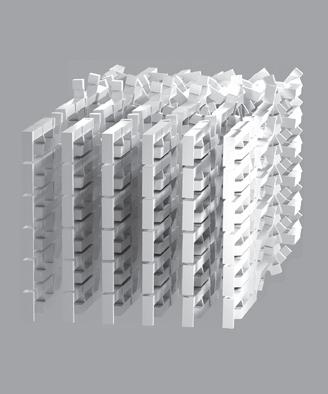
numerical values are assigned to the Hebrew letters, such as the practices of gematria or numerology, Franco called this system of weights “molecular gematria.”
An examination of the letters as a threedimensional construction was initially undertaken by situating them on a single plane. In architectural terms, this strategy is called “three-dimensions in two-and-a-half dimensions,” since the transition from two dimensions to three dimensions does not exploit the full spatial potential, but is rather limited to the extrusion of forms. Franco did not make do with a restricted three-dimensionality, and explored the option of giving full three-dimensional expression to each letter, by dismantling them and locating the atoms in space to create a different spatial expression for each of the letters.fig. 9 He then went further by enabling the replication of the atoms to endow them with a new visual appearance. In this case as well, Franco stuck to set principles in treating the atoms: their replication and location in relation to one another involved an examination of the angles at which they rotate, the centralized
I=4
K=2
E=20
D=4
Test No. W_001
Since the form of the atoms is based on a modular grid, one can calculate the grid parts composing each atom, and thus calculate the weight of the atoms.
J=2
Test No. W_010
Once the weight of each atom was calculated, we could calculate the weight of the letters in the molecular alphabet. The chart presents the letters in descending order, from M, the heaviest letter, to Y, the lightest. Some letters are identical in weight.
Kobi Franco was born in Jerusalem, 1972; lives and works in Tel Aviv
1988 B.Des, department of visual communication, Bezalel Academy of Arts and Design, Jerusalem
2020 M.Des, Shenkar College, Ramat Gan
Since 2023
Head of the M.Des program, Shenkar College, Ramat Gan
Selected Exhibitions
2015 ”After Twenty Years: Designing Rabin’s Memory,” VITRINE Gallery, HIT, Holon; curator: Dana Arieli
”Urban Shade in Israel,” Design Museum Holon; curator: Martin Weyl
”Tel Aviv Museum of Art Visits Berlin” (selected catalogs designed for the museum), Martin-Gropius-Bau, Berlin
2018 ”Total Red: Design,” Artists House, Tel Aviv; curators: Dana Arieli, Sonia Olitsky, Nadya Bakuradze
2019 Recipients of the Ministry of Culture and Sport Prize, Ashdod Art Museum; curators: Yuval Biton, Roni Cohen Binyamini
2021 ”Literary Freaks” (with Michael Golan), Jerusalem Design Week, Hansen House; curators: Tal Erez, Anat Safran
Asia Graphic Design Triennale, Seoul Arts Center
China International Poster Biennial, School of Design, China Academy of Art, Hangzhou, Zhejiang Province, China
TIDA (Taipei International Design Award), Taipei, Taiwan
Peru Design Biennial, Cultural Center of the Peruvian Design Association, Lima, Peru
International Poster Triennial, Museum of Art and Design, Toyama, Japan
2022 ״Type Directors Club 68,״ Cooper Union Gallery, New York
Cyprus Poster Triennial, State Gallery of Contemporary Art, Nicosia, Cyprus
Ecuador Poster Biennial, House of Culture Nucleus of Azuay, Cuenca, Ecuador
2023 ”Quasi: Experimental Writing Systems,” HMCT, Pasadena, California; curator: Lavina Lascaris
Prizes
1998 Mike Pelheim Typography Award, department of visual communication, Bezalel Academy of Arts and Design, Jerusalem
2008 Design Award, Israeli design community
2019 Ministry of Culture and Sport Prize for Design for 2018
2021 Jury Award, TIDA (Taipei International Design Award)
Excellency in Design Award, Asia Graphic Design Triennale, Seoul
Silver Award, Graphis Magazine
Poster Annual
Jury Prize, China International Poster Biennial, School of Design, China Academy of Art, Hangzhou, Zhejiang Province, China
Honorable Mention, TIDA (Taipei International Design Award), Taipei, Taiwan
2022 Certificate of Typographic Excellence, Type Directors Club, New York
DNA Paris Design Award Award of Excellence, 12th Annual Typography Competition, Communication Arts Magazine
Silver Award, Graphis Magazine Poster Annual
2023 Silver Medal, International Design Awards (IDA), Los Angeles

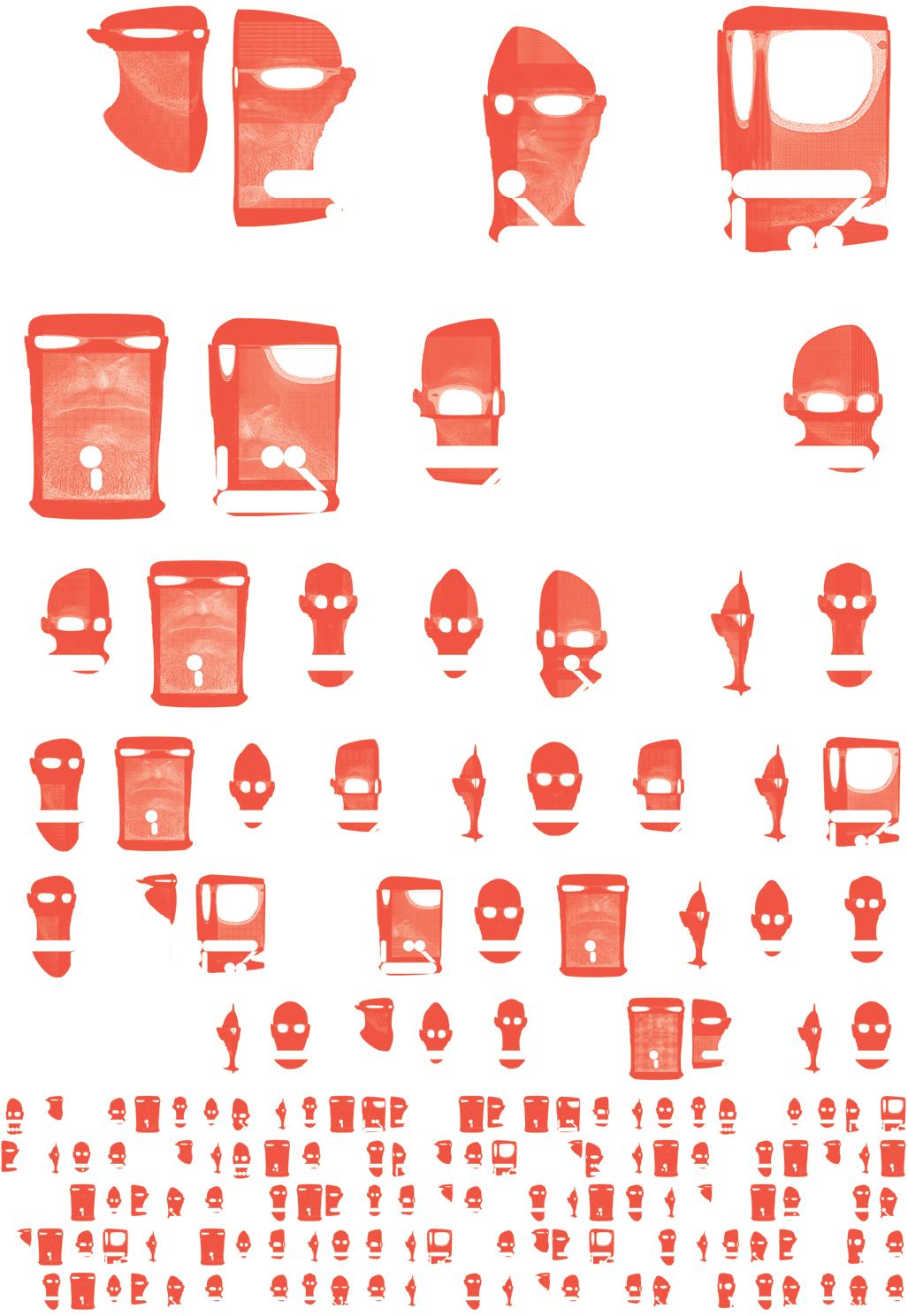
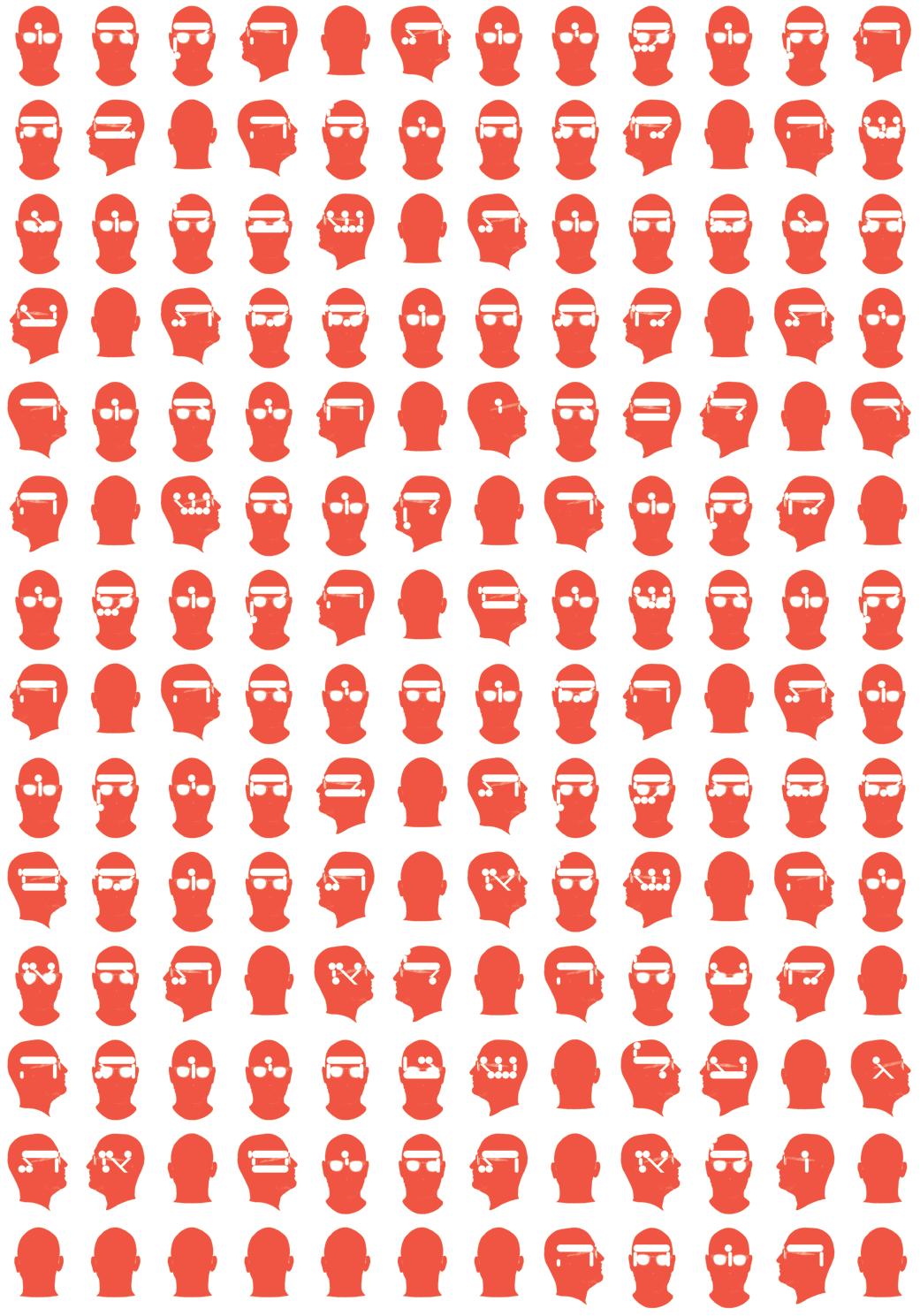
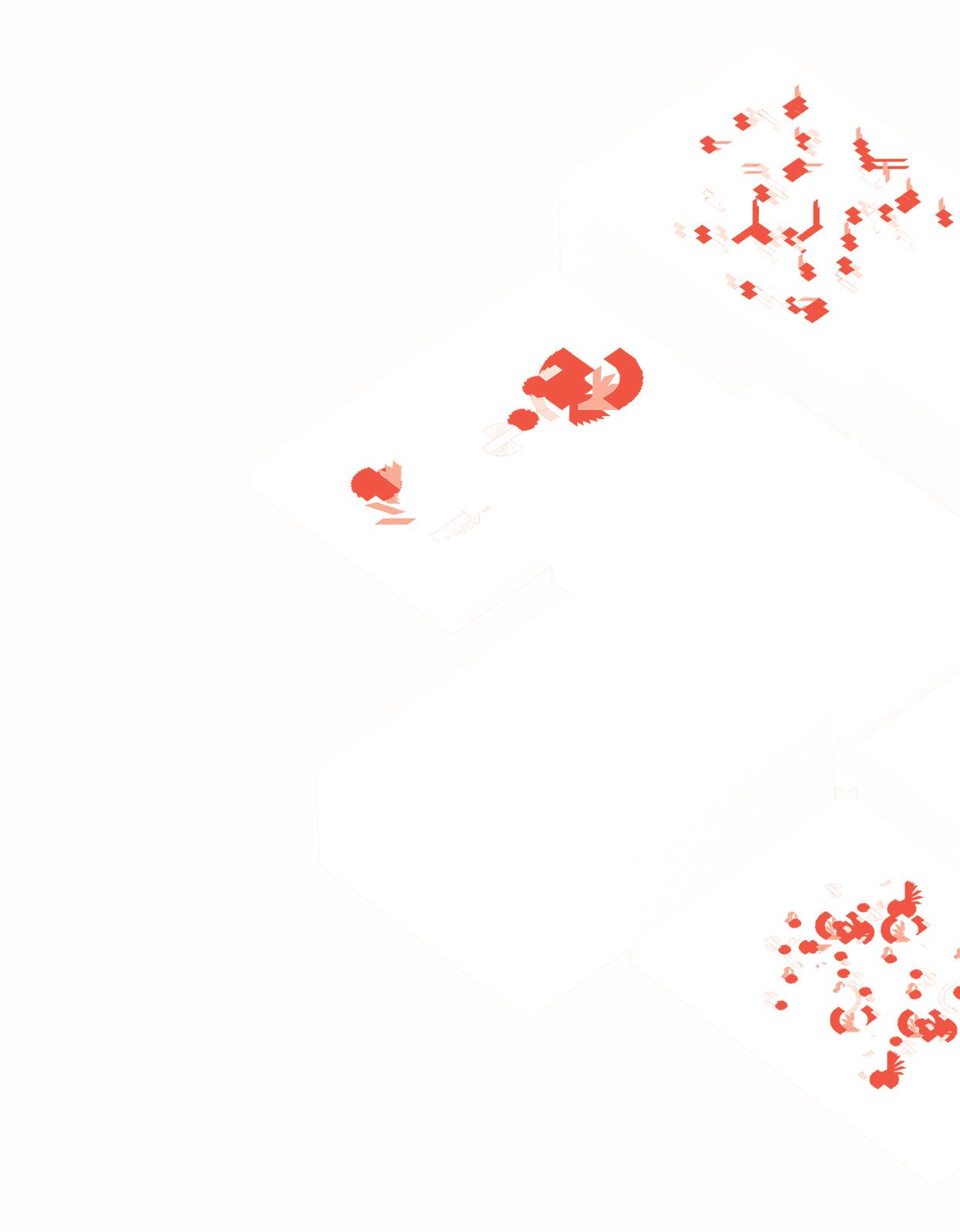
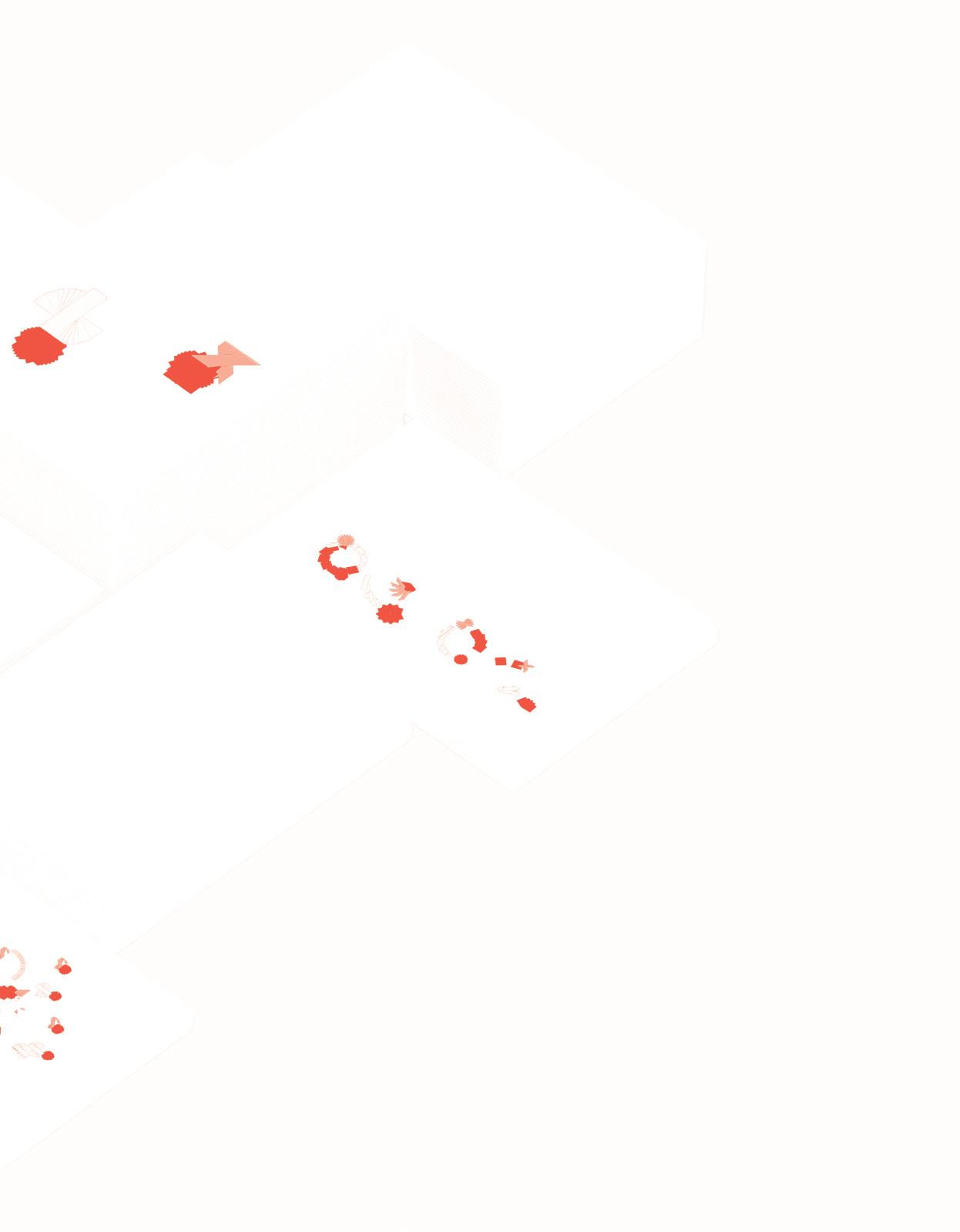
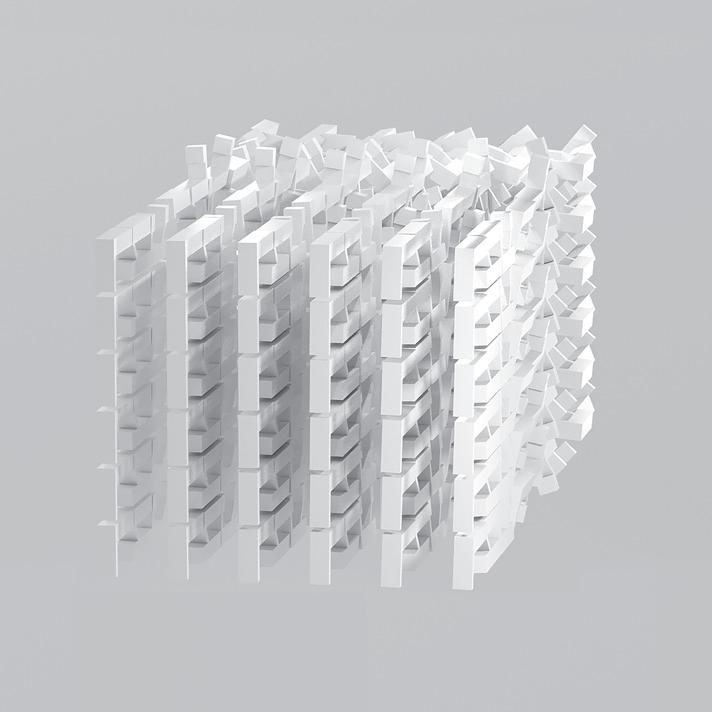
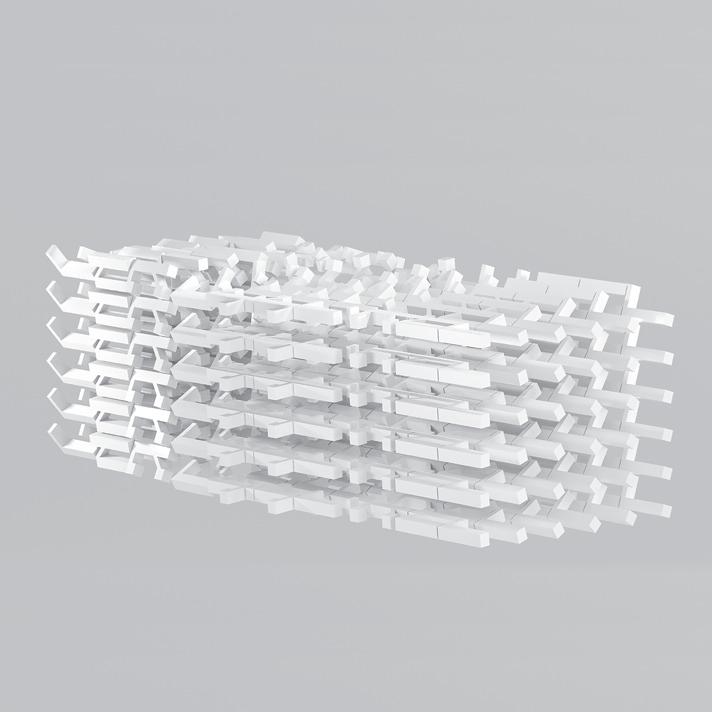
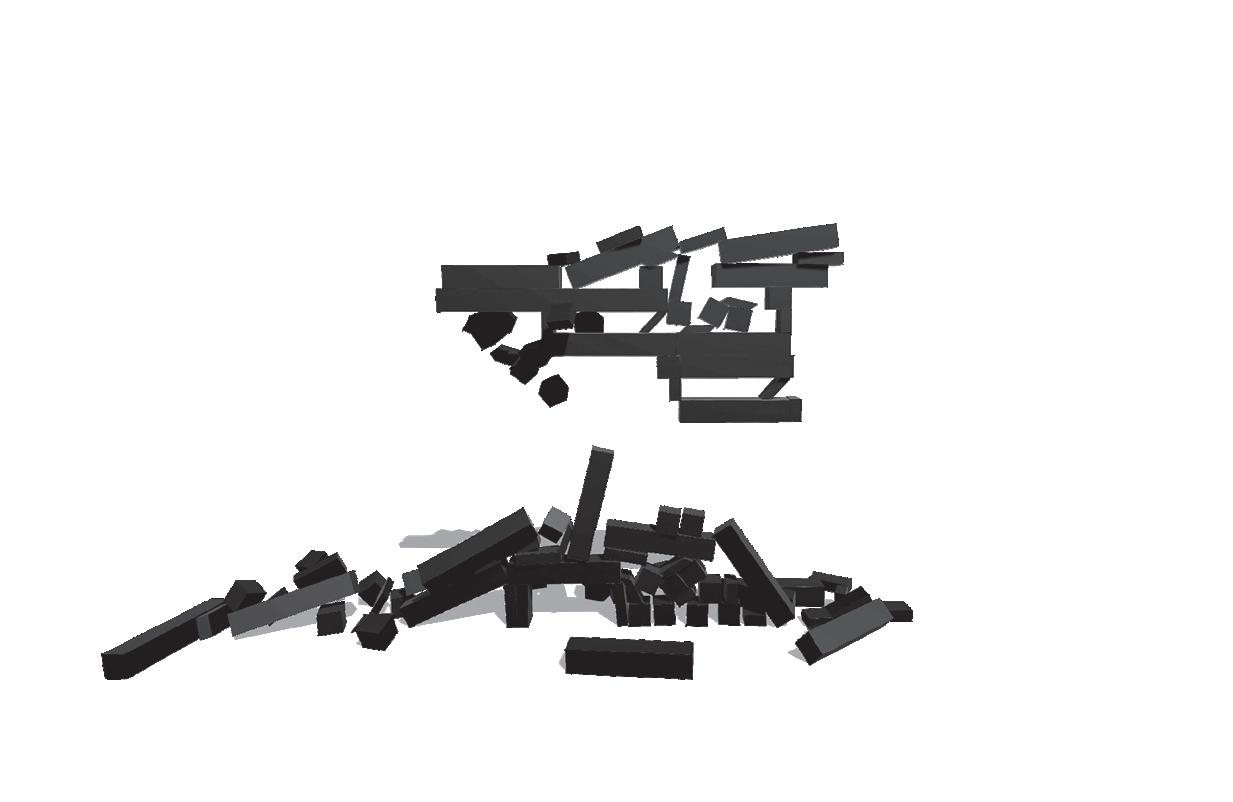

Microscopic view 3: Subjection of letters to the force of gravity according to the order of their appearance in the palindrome
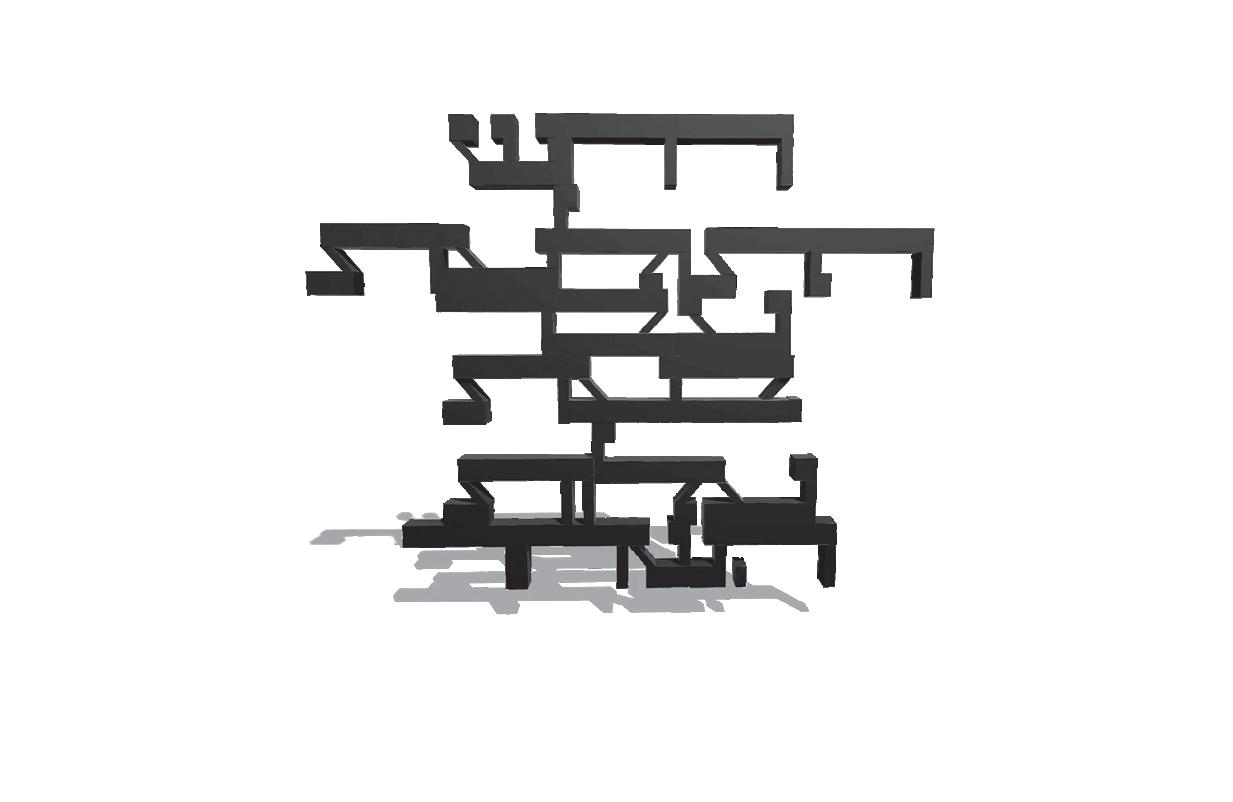

D5E3IJ4K2, D10E2J3K3V, D9E2I2J4K2, D5E3IJ3KV, D5E3I2JK3 = 69
D2E5J3K2 = 118
D4E4IJ5K2 = 114
D4E4J5K2 = 110
D2E4I2J4K = 106
D2E4IJ3K3 = 104
D2E4I2J2K = 102
D11E2J4K3, D5E3IJ5K2 = 98
D8E2J3K2V2, D4E3IJ3K2, D3E3I2J4K = 90
D3E3IJ3K2, D3E3I2J2K = 86
D7E2I2JK3, D11EIJ4K2V, D3E3I2JK, D3E3IJ3K, D2E3I2J3K = 84
D7E2IJ2K2, D6E2J3K3V, D3E3J3K, D10EI2J4K2 = 80
D5E2I2J3K2, E3I3J3, D5E2IJ4KV = 78
D4E2I2J2KV, D8EIJ3K2V2, D5E2IJ2K3, D5E2I2JK2, D5E2I2JK2 = 74
D4E3I2J3K2 = 94
D2E3I2J2K = 82
D4E2I2J2K2 = 72
D3E2I3J2K = 70
D3E2I2J3K = 68
D8EI2J2K = 66
D7EIJ2K2V, D3E2IJ3K, D3E2I2JK = 64
D6EI2J3K2, D3E2IJ2K, D7EJ3K2V = 62
DE2I2J3 = 58
DE2I2J2 = 56
D4EI3J2K, D6EIJK2, D6EIJK2 = 54
D5EIJ2V, D10JK3V = 52
D5EJ3K2 = 50
D4EI2JK, D4EI2JK = 48
D8J2K2V, D4EJ3K, D4EJ3K, D4EJ2K2, D3EIJ3K = 44
D2EI3J = 42
D2EIJ3 = 38
D2EIJ2 = 36
D5I2J2K = 34
D4J3K = 24
D3J3 = 18
According to the Kabbalah, there are 72 letter combinations representing the names of divinity. These letters hold the key to the universe׳s energy channels. Molecular gematria (the assignation of numerical values to Hebrew letters) reveals the hierarchical relations between different letter combinations according to their weight.
D9E3I3K4
יהיו םיהלא ארקיו :ןכ יהיו םימי ארק םימה הוקמלו ץרא םיהלא ארקיו :ןכ יהיו םוקמ לא :ןכ יהיו ץראה וב ירפ ירפ ץראה םיהלא רמאיו :יכ םיהלא אריו םיהלא רמאיו :םוי רקב יהיו יהיו :יכ םיהלא אריו וב ירפ ץראה :ןכ יהיו ץראה ריאהל ויהו :םימילו ויהו הלילה ןיבו םויה ןיב יהי ריאהל םיהלא :םיבכוכה הלילה רואמה םויה רואמה םיהלא רקב יהיו יהיו :יכ םיהלא אריו ןיבו רואה ןיב הלילבו םויב :ץראה היחה לכ םיהלא ארביו :ץראה היח םימה םיהלא רמאיו :םוי ואלמו וברו ורפ רמאל םיהלא ךרביו :יכ םיהלא אריו לכ םימה ץראה םיהלא רמאיו :םוי
םוהת ינפ לע ךשחו והת התיה :תאו םימשה תא תישארב ךותב עיקר :דחא ברע
:ינפ לע לעמ רשא עיקרל תחתמ רשא לדביו עיקרה תא שעיו :לידבמ הארתו דחא םימשה תחתמ :ינש ברע םימש עיקרל :עיקרל
השע ץע ערז עירזמ בשע אשד אשדת :בוט השביל :השביה ץעו והנימל ערז עירזמ בשע אשד אצותו :לע וערז רשא ונימל
םימשה עיקרב תורואמ :ישילש ברע :בוט והנימל וערז רשא השע םימשה עיקרב תורואמל :םינשו םידעומלו תותואל לידבהל תאו תלשממל לודגה תא םילודגה תורואמה ינש תא שעיו
התיה
רואל
ארק ךשחלו םיהלא שעיו :םימל םימ ןיב לידבמ יהיו םימה ךותב עיקר יהי רשא םימה ןיבו עיקרל תחתמ רשא םימה ןיב לדביו עיקרה תא יהיו ברע יהיו םימש עיקרל םיהלא ארקיו :ןכ יהיו עיקרל לעמ םוקמ לא םימשה תחתמ םימה
רמאיו :ינש םוי רקב הוקמלו ץרא השביל םיהלא ארקיו :ןכ יהיו השביה הארתו דחא אשדת םיהלא רמאיו :בוט יכ םיהלא אריו םימי ארק םימה רשא ונימל ירפ השע ירפ ץע ערז עירזמ בשע אשד ץראה ערז עירזמ בשע אשד ץראה אצותו :ןכ יהיו ץראה לע וב וערז :בוט יכ םיהלא אריו והנימל וב וערז רשא ירפ השע ץעו והנימל עיקרב תורואמ יהי םיהלא רמאיו :ישילש
ץראה לע ריאהל םימשה עיקרב תורואמל ויהו :םינשו םימילו רואמה תא םילודגה תורואמה ינש תא םיהלא שעיו :ןכ יהיו תאו הלילה תלשממל ןטקה רואמה תאו םויה תלשממל
םיהלא רמאיו
:םימשה
תשמרה היחה שפנ לכ תאו םילודגה םינינתה תא םיהלא ארביו םיהלא אריו והנימל ףנכ ףוע לכ
םימה וצרש רשא םימה תא ואלמו וברו ורפ רמאל םיהלא םתוא ךרביו :בוט יכ רמאיו :ישימח םוי רקב יהיו ברע יהיו :ץראב ברי ףועהו םימיב ץרא ותיחו שמרו המהב הנימל היח שפנ ץראה אצות םיהלא המהבה תאו הנימל ץראה תיח תא םיהלא שעיו :ןכ יהיו הנימל רמאיו :בוט יכ םיהלא אריו והנימל המדאה שמר לכ תאו הנימל ףועבו םיה תגדב ודריו ונתומדכ ונמלצב םדא השענ םיהלא :ץראה לע שמרה שמרה לכבו ץראה לכבו המהבבו םימשה רכז ותא ארב םיהלא םלצב ומלצב םדאה תא םיהלא ארביו ורפ םיהלא םהל רמאיו םיהלא םתוא ךרביו :םתוא ארב הבקנו םימשה ףועבו םיה תגדב ודרו השבכו ץראה תא ואלמו וברו םכל יתתנ הנה
Intellignet Letters
Test No. G_004
היפרגופיטל
תירלוקלומ וקנרפ יבוק